Calling All Birders: Help Us Help Swifts
Fingal County Council is preparing for a preliminary swift survey, and we want your help. Do you know of any places in your area where swifts nest, or where they have nested in the past? We want to hear about it!
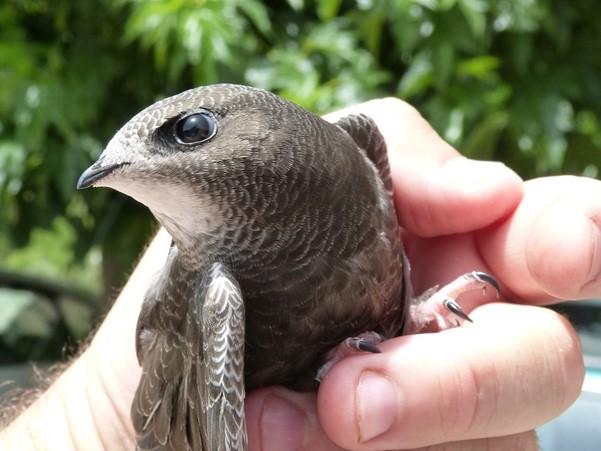
Photograph by Marc Pascual
What is this about?
Fingal County Council is preparing for a preliminary swift survey, and we want your help. Do you know of any places in your area where swifts nest, or where they have nested in the past? We want to hear about it! If you are planning to spend some morning or evening time outdoors this summer, then keep an eye out for these rare and amazing birds and let us know if you spot them.
Swifts can be very hard to spot, even at known nesting sites. Their nests are not visible from the outside, and the birds are small, quick and spend much of their day too high up for people to see, so they are most often spotted at dawn and dusk when they leave and enter their nests. The most obvious form of swift activity is ‘screaming parties’ in which 10-20 swifts will fly over their nests, usually in the evening, making shrill ‘screaming’ calls to each other and any swifts that may be looking for a nest site nearby.
The survey will not disturb the swifts in any way. There will be no use of bird calls, drones or large machinery like cherry pickers- we will be performing simple observations from the ground in small groups. Surveys in completely random locations are unlikely to result in any swift sightings, however, which is why we need your help.
A swift in flight (Photo by Stefan Berndtsson, licensed under CC BY)
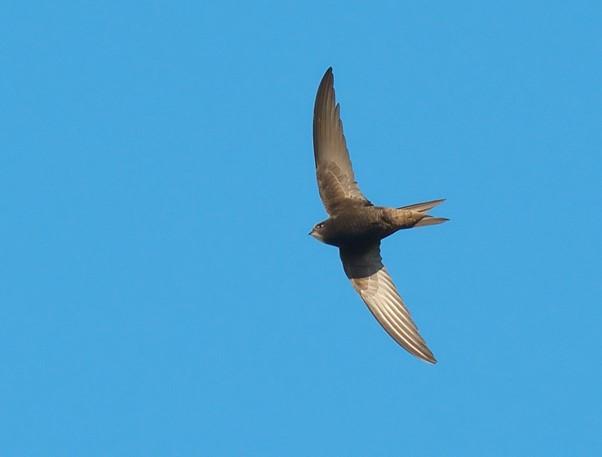
What are swifts?
Swifts, specifically Common Swifts (Apus apus), are small migratory birds that come to Ireland from Africa every year to breed. Despite their small size, swifts are some of the most impressive aerialists in the animal kingdom. Extremely well adapted to flight (the Ancient Greek word apus translates roughly to ‘footless’, a reference to their tiny legs), swifts spend up to 10 months at a time in constant flight, nesting only to breed and raise their chicks; non-breeding swifts may stay airborne for a year or more. Swifts are also capable of reaching 110 kph flight speeds, making them one of the fastest birds in the world.
In a natural setting, swifts would build concealed nests inside holes in trees or cliff faces. Because of the widespread loss of ancient forest, and therefore suitable tree holes, swifts are now dependent on buildings for nesting sites. However, not just any building will do: swifts need a hidden, high up location that will provide protection from wind, rain and predators. Urban swifts are most often found under eaves or in various cracks and crannies in buildings, especially ones that are old or have prominent stonework.
The modernisation of building standards, along with repairs and retrofits of existing buildings, has left swifts with far fewer places to nest and contributed to dramatic declines across the British Isles and Europe. Ireland’s breeding population of swifts fell by 58% between 1998 and 2016, leading to their current inclusion in the Birds of Conservation Concern in Ireland (BoCCI) Red List. This problem is two-pronged, eliminating potential new nesting sites and making old nest sites unusable.
Renovations and repairs are especially disastrous for swifts when they make established nest sites inaccessible. Swifts are highly site-faithful, returning to the same nesting site year after year, sometimes across several generations, and losing a nest site is traumatic for the birds. Finding a new nesting site after one has been lost can be so difficult that displaced breeding pairs may have few or no chicks that year, which can persist for multiple years and even cause individual swifts to stop breeding altogether.
A swift entering a nest box (Photograph by Peter Ertl, licensed under CC BY)
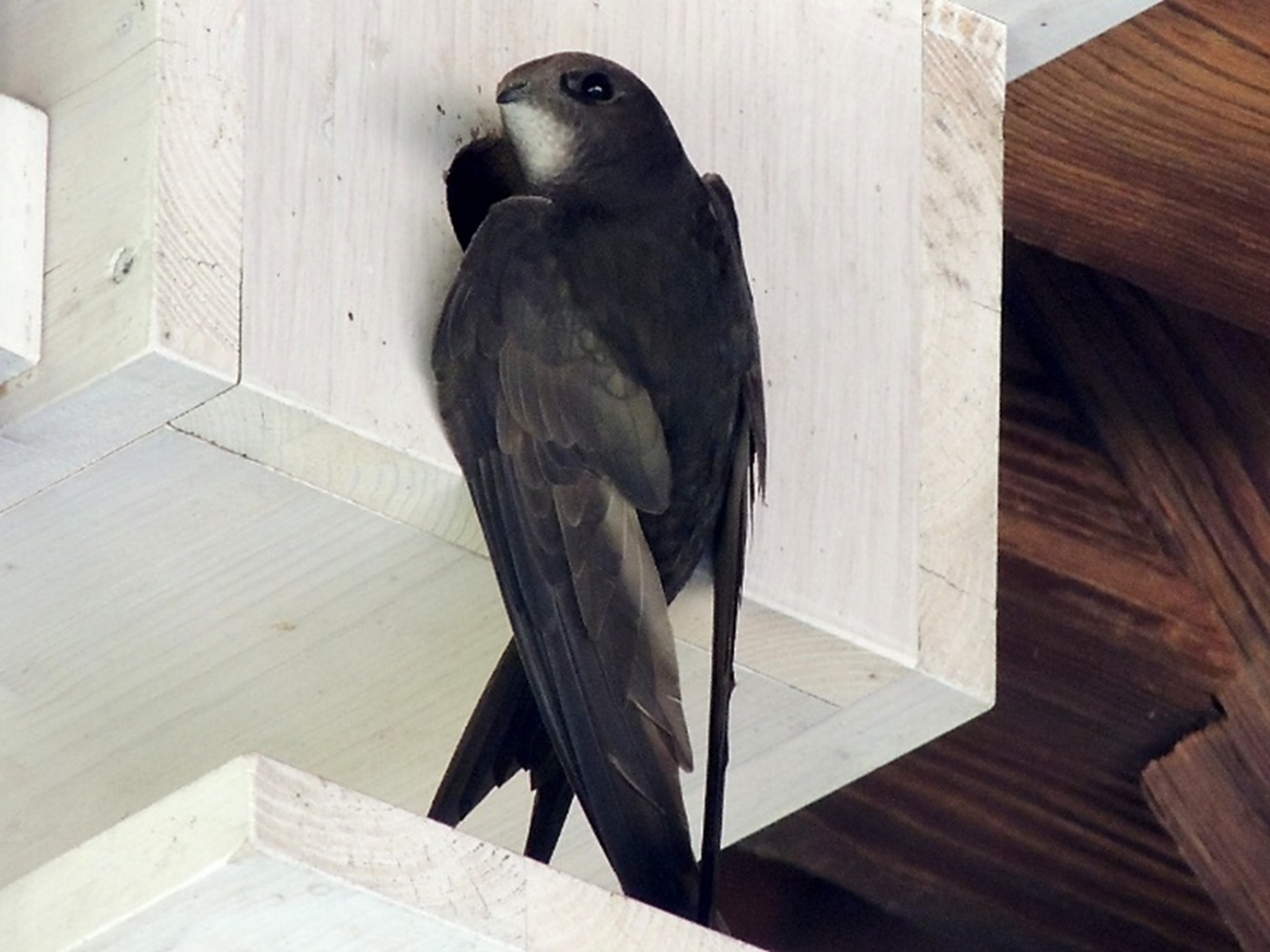
How to identify swifts
Swifts are often confused with swallows and martins that visit Ireland during the summer, although they are actually more closely related to hummingbirds than any of these look-alikes.
Swifts are almost entirely dark brown and often look black against the sky, with a small, pale patch on the throat. They are larger than swallows and martins, with long curving wings that give them a distinctive crescent or boomerang silhouette. Swifts also have dark bellies, whereas swallows and martins have pale undersides. Swifts have a distinctively shrill, screaming call and longer wings in proportion to their bodies when compared to swallows and martins.
Swifts also have unique social behaviours, most prominently their tendency to form screaming parties, so if you see a group swift-like birds flying over roofs and making shrill calls to one another, then you can be sure that you are indeed seeing swifts. Conversely, if you see a bird perching then it is almost certainly not a swift, although they may briefly cling to vertical walls near their nests.
Distinguishing between these birds can be very tricky, so you may want to have a look at the graphics from BirdWatch Ireland below comparing the four most similar species.
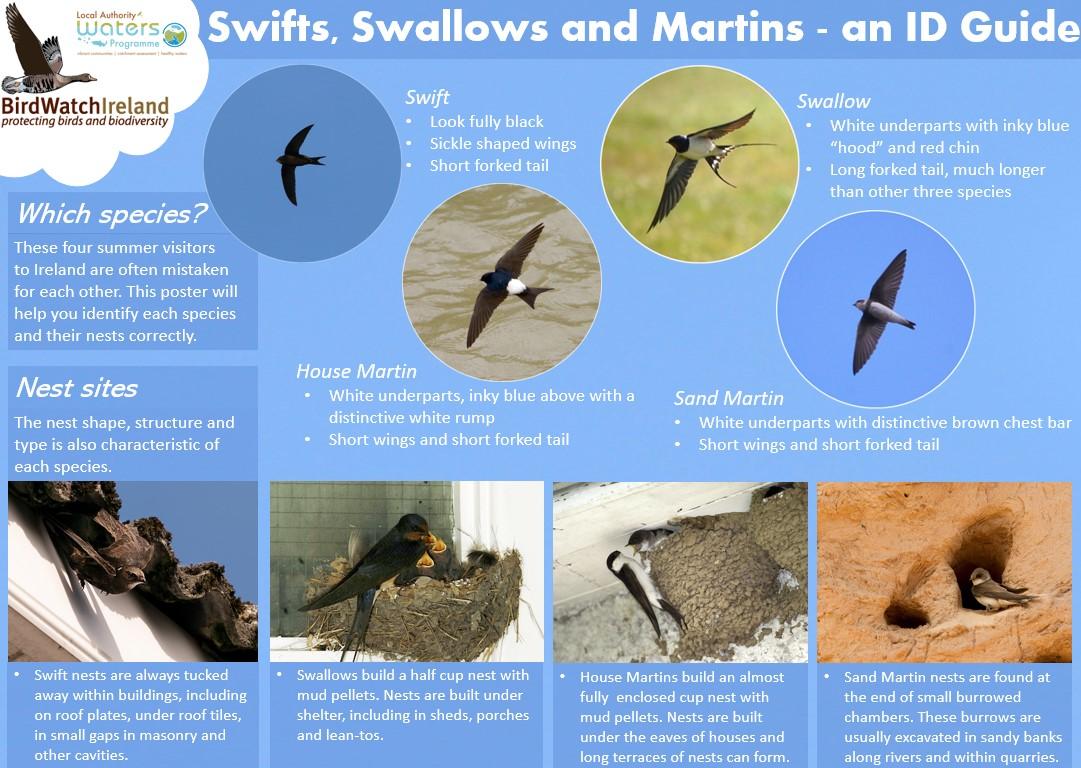

Why swift surveys?
Swift surveys are part of a greater effort to support the swift population of Fingal, and good swift data can make other measures much more effective. Knowing where swifts are nesting can help us choose ideal locations for nest boxes. Because swifts nest in colonies, they are more likely to move into boxes near other nests.
It also means that we can protect and preserve existing nesting sites. Because swift nests are so well hidden, renovating old roofs and walls (where swifts are most likely to nest) can unwittingly destroy nest sites, sometimes without anyone realising what has happened. Knowing where nests are means that we can make sure that any necessary works take place outside of the breeding season, and in a way that preserves the nest site, which may include installing a nest box in exactly the same place so that swifts can easily return the following year.
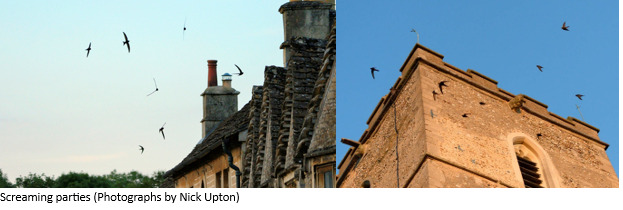
I saw a swift. What now?
Tell us about it! Send an email describing your sighting to [email protected] . The more information, the better: time and date of the sighting, location, number of birds, what they were doing, how the weather was at the time, if you have seen them before, etc.
The location is the key, so be as specific as you can, including details like GPS coordinates or Google Maps ‘Plus Codes’ if you have them. Written descriptions are also very important for nests, indicating which direction the nest is facing (e.g., west side of building), how high up it is and if there are any features (e.g., second window from the left) near the nest entrance that could help us pinpoint it. Photos or sketches showing the nest location are great. Also, please let us know if your sighting was on private property, as we cannot survey people’s homes, although knowing that there are swifts present is still valuable.
Another thing to watch out for is a bulge in the swift’s throat. A bulging throat most likely indicates that they are carrying a ball of caught insects, called a bolus, which they collect and use to feed their young in the nest. A bolus is a sign of a breeding bird, which is a good sign and means that there is likely a nest nearby. Most swift sightings are too brief and distant for spotting a bolus, so don’t worry too much about looking for one, but let us know if you happen to see it.
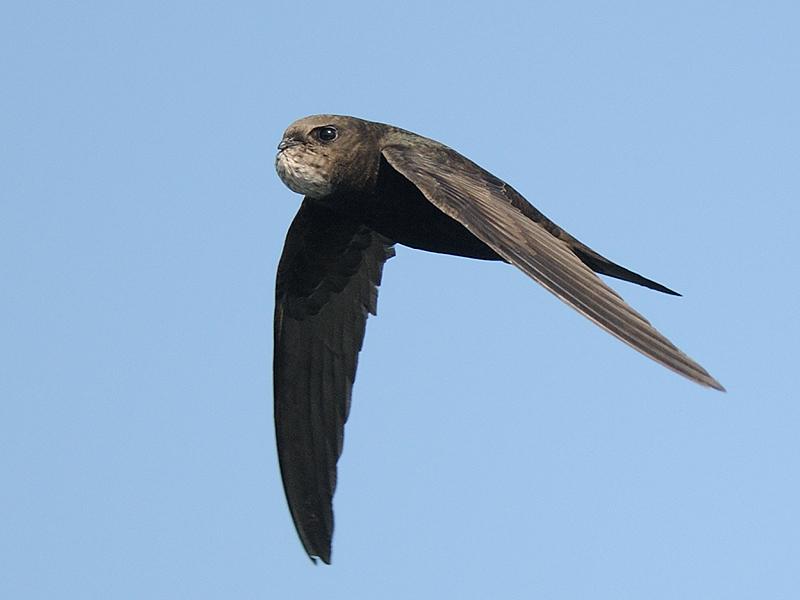
Above and beyond
We are really just asking people to keep an eye (and ear) out for signs of swift activity as they go about their day. However, if you want to go out specifically to look for swifts, or just want to know more about them and how you can support their conservation, then there are a few resources we can recommend (listed below). Also, check back on this page around April, as we hope to carry out larger surveys in the future and will need help from volunteers to make it happen.
- Swift Conservation Ireland – for information on Irish swifts and their conservation, including advice on installing nest boxes in your home
- BirdWatch Ireland’s – good for anything related to Irish birds
- Saving Swifts guide
- Saving Swifts article (from Wings, Summer 2023 issue)
- Swift Conservation Project
- Action for Swifts – swift conservation in the UK and Ireland
- Swift Conservation – based in the UK, but includes content from around the world
- Commonswift Worldwide – international site, available in a variety of languages
- Includes an international list of other websites about swifts here